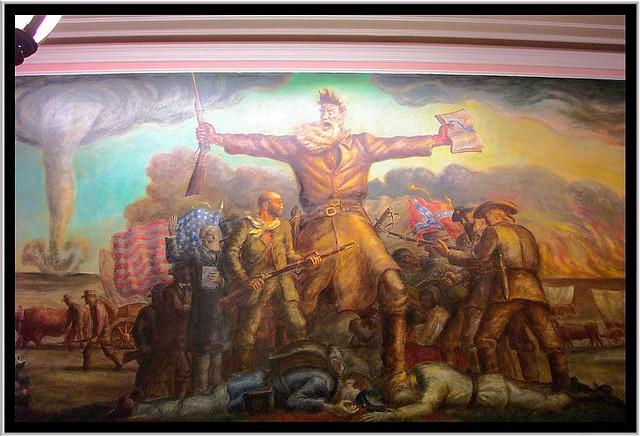The American Civil War, often termed the bloodiest and most divisive conflict in U.S. history, resulted in over 620,000 casualties and unfolded between 1861 and 1865 during Abraham Lincoln's presidency. Sparked by uncompromising differences between free and slave states over the national government’s authority to prohibit slavery in unorganized territories, the war erupted after Lincoln’s election victory, which led several Southern states to secede and form a Confederacy under Jefferson Davis. This schism drew battle lines that escalated into full-scale war, culminating in the Union's victory in 1865. The Union required Confederate states to ratify the Thirteenth Amendment, abolishing slavery, marking a turning point in American history. Let us delve deeper into the key factors that ignited this pivotal conflict in American history.
- Anti-slavery
- Industrialized economy
- Supported a strong federal government
- Defended slavery
- Predominantly agrarian
- Favored states' rights and independent power

Slavery
The issue of slavery was the root cause of why the American Civil War broke out in 1861.
On one side, the Northern and Western states and territories were fighting to protect the Union, and on the other hand, the South was fighting to achieve its independence with its own Constitution.
Slavery was a huge part of the Southern rural economy, where slaves would provide the workforce on plantations and carry out other tasks.
Even though there were only a few slave owners, around 4 million Africans, and their descendants were given slave status in the South.
The ownership of slaves was seen as the mark of an accomplished and influential man; it leveraged a person's social status.
They represented personal and corporate wealth and could be traded or rented to pay off debts or get money in exchange.
The rise in the number of slaves also coincided with the decline in land and cotton cost. No wonder the South desperately wanted to continue the institution of slavery.
The opposite of this was true in the Northern states, as, one by one, they had abolished slavery. There was a massive inflow of immigrants during the potato famine of the 1840s and 1850s, mainly from Germany and Ireland.
This gave the North hardworking human resources who worked at relatively low wages, diminishing the need for slaves.

States' Rights
The war was preceded by an already violent struggle between the individual states and the federal government over political power.
During the Civil War period, this struggle was primarily about slavery. The pertinent question being whether the federal government had the right to regulate or abolish slavery in an individual state.
This debate is what further divided the southern and northern states due to their opposing views.
The Missouri Compromise
The issue of slavery further intensified through the addition of territories from the US Mexican War. The abolitionists were fighting to have slavery declared illegal in the added states, similar to the 1787 Northwest Ordinance.
On the other hand, those profiting off slavery opposed abolition as it would diminish their political power and eventually eliminate slavery everywhere.
As the new territories joined the US, both groups rushed to occupy them to create a majority and spread their sphere of influence.
The Dred Scott Decision
Another issue that was brewing was that of the slave, Dred Scott. His wish to seek US citizenship via the legal system eventually led the case to the Supreme Court.
The court denied his request for citizenship and ruled that individuals with African blood would not be allowed to become American citizens.
With this landmark announcement in 1857, the Supreme Court also overturned the 1820 Missouri Compromise that would limit the ownership of slaves in selected US territories.

Abraham Lincoln's Election
The old Whig party dissolved because their representatives were unable to provide an amicable solution to voters. A majority of its followers joined to create the Republican party in the 1850s.
Their manifesto was based around curbing the spread of slavery towards the west and became popular with everyone who didn’t form part of the confederacy.
In 1860, the Republican candidate Abraham Lincoln won the presidential elections, which exacerbated the South's fears that the Republicans would spell the end of slavery.
However, even though Lincoln was against slavery, he said he wouldn't meddle where it existed.

John Brown
Before the Civil War, clashes between the two pro and anti-slavery groups were commonplace, especially in Kansas.
John Brown, an abolitionist, led some of the most violent clashes that resulted in the deaths of pro-slavery residents.
As one of the key figures before the war, he eventually left Kansas to continue his fight near the hub of slavery.

The Raid On Harper's Ferry
In 1859, Brown and some of his followers sieged the federal arsenal at Harper's Ferry to attempt a slave rebellion even though he later denied this at his trial.
US marines were able to dislodge the group, and Brown was eventually hanged for treason.
Initially, the South did not see Brown as anything more than a mad man and thought of his hanging to have minor consequences.
However, when the abolitionists tagged him as a martyr, the Southerners saw it as proof that the North had intentions to carry on his fight against slavery.
Hence, Brown's Harper Ferry raid became an impactful catalyst for a full-blown Civil war.
Southern Secession
In an 1860 secession convention in South Carolina, the state's contract with the US was voted for dissolution.
During Andrew Jackson's presidency in the 1830s, South Carolina had threatened to dissolve its contract with the US due to a tariff that favored Northern manufacturers while increasing the South's cost.
Jackson vowed to deploy an army to keep the state well-within in the Union and gained Congress's authorization.
This ruling resulted in Southern senators walking out before a vote could be taken. However, before matters escalated any further, a compromise was reached.
In 1860, South Carolina urged slaveholding states to follow their example and dissolve their contract with the US. Doing so would safeguard their interests and form a Southern Confederacy.
Six other states followed, namely Florida, Mississippi, Georgia, Louisiana, Alabama, and Texas, while the rest temporarily voted against the secession.
Sectionalism
A difference in economies, customs, social structure, and political values of the South and North promoted sectionalism between the two that further increased between 1800 and 1860.
The northern states had eliminated slavery and urbanized, industrialized, and constructed farms. On the other hand, the Southern states relied heavily on slave labor for their agricultural economy.
Therefore, in the 1840s and 50s, the debate over slavery divided the ideological spheres into separate Southern and Northern denominations.
As a result, Historians have pondered the role of economic differences in adding fuel to the cause of the US Civil War.
However, most historians now believe that while the two groups were socially different, their economies were complementary, benefitting one another.
Key Takeaways
The US Civil War was a turning point in American history. Four years of bloodshed, losses, and bravery further divided the already separated Northern and Southern states. Even though many issues led to the war, they all centered around slavery.
And even after the Union won the war, some ideological differences lingered in the aftermath.
Even though the South was required to abide by the Thirteenth Amendment, it did not follow through, and African-Americans had to face racial segregation as a result. Although the matter is generations behind us, some still face racial discrimination by modern-day confederate-apologists.















